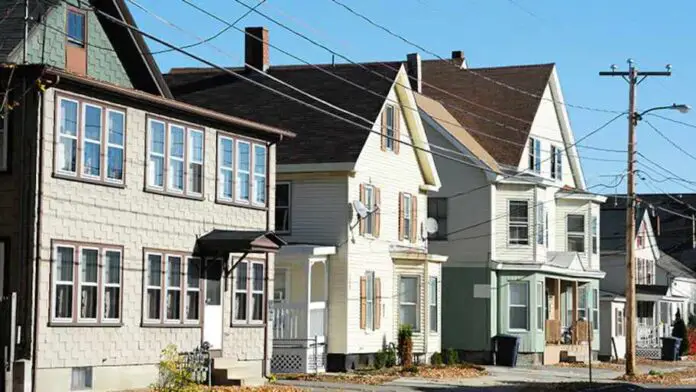Utility poles are a common sight across neighborhoods, towns, and rural landscapes. They form a critical part of the infrastructure that powers our homes, connects us through telecommunication networks, and delivers cable services. However, when these poles are located on private property, questions about ownership, rights, and responsibilities often arise. This blog will delve into the key aspects of utility poles, explaining their ownership, legal easements, and what it means for you as a property owner.
Table of Contents
Who Owns Utility Poles on Your Property?
Utility poles located on your property may seem like they belong to you, especially since they occupy part of your land. However, this is not the case. Utility poles are owned by the utility companies that install and maintain them. These companies include electric power providers, telecommunication companies, and cable service providers.
Even though the poles are situated on your private property, utility companies have legal rights—granted through easements or rights-of-way—to place and manage them. The ownership and management of these poles rest solely with the utility companies.
What Is a Utility Easement?
A utility easement is a legal agreement that grants a utility company the right to use a portion of your property for a specific purpose. When utility poles are installed on private land, an easement agreement is established to protect the company’s ability to provide essential services.
These easements are typically recorded in your property’s deed or other legal documentation. They are binding agreements that remain in effect even if the property changes ownership. This means if you purchase a property with existing utility poles, the easement will continue to be valid and enforceable.
How Utility Easements Work
Utility easements are not unique to one property. Many utility companies acquire easements across entire neighborhoods or areas to create networks that serve the community efficiently. Here’s how they work:
- Installation of Poles:
Before placing utility poles, the company will establish an easement agreement with the property owner or the municipality, depending on the location. - Access Rights:
Easements grant utility companies the legal right to access the poles for installation, maintenance, inspection, and repair. They do not need to seek your permission each time they access their poles. - Limitations on Land Use:
As a property owner, you may face restrictions in using the portion of your land covered by the easement. For instance, building structures, planting large trees, or obstructing access to the poles may be prohibited.
Understanding Utility Pole Ownership and Its Significance: Who owns the utility pole on your property?
Utility poles are primarily owned by utility companies that provide essential services such as electricity, telecommunications (including phone, internet, and cable TV), and sometimes by municipal or local government entities. Typically, individual utility poles are owned by a single utility company, but there are instances where poles may be jointly owned or shared among multiple companies providing different services.
Utility poles have a significant impact on daily life in the USA.
Here are some ways in which they are significant:
- Supporting public utility and services apparatus: Utility poles provide support to public utility and services apparatus, including power lines, cables, and wires. They also accommodate other relevant equipment such as road appliances (e.g., traffic lights) and decorations for events and public holidays.
- Efficient way of keeping hazardous equipment: Utility poles efficiently keep awkward or hazardous equipment in a secure location where there is minimal chance of disturbance. The overhead suspension also helps to provide a more reliable means of signal transmission for computers, phones, and other telecommunication devices
- Enhancing and expanding our lives: With the aid of utility poles, the developments in telecommunication technology have been able to continue to enhance and expand our lives, keeping us connected across boundaries of time and space
- Affordable and easy to transport: Despite storm damage, wooden poles remain popular with utility companies because they are affordable, lighter, and easier to transport than steel or concrete
- Supporting broadband infrastructure: Much of the broadband infrastructure zig-zags the country via utility poles
- Joint ownership: In the USA, joint pole ownership is common, with Southern California Edison’s service area having 70% of the poles jointly owned.
- Estimated number of poles: There are an estimated 160 million wood poles in North America
Overall, utility poles play a crucial role in supporting and maintaining the infrastructure that powers our daily lives.
Steps to Identify Who Owns the Utility Poles on my Property?
You can start by getting in touch with the local utility agency to find out who the owner of the utility pole that is situated on your property is. They will be able to tell you who owns the pole and whether or not you have any easements on your land. You can also look for any utility easements in your property’s survey.
Hiring a business that specializes in performing title checks is another option to find out whether a property has a utility pole. If there are any easements on the land, they will look into them, and if there are any other burdens, they will reveal them. Additionally, you can go to the county land records office. They can look up any utility easements in the present deed for you. They might also be able to provide you with a copy of the property’s survey.
Rights and Responsibilities of Utility Pole Ownership: What You Need to Know
The rights and responsibilities of utility pole ownership can vary depending on specific circumstances, such as whether the pole is on private or public property and whether multiple utilities jointly own it. Here are some general points to consider:
Rights of Utility Pole Ownership
- Access to the pole for reasons of maintenance and repair.
- Right to use the space around the pole for equipment and other related purposes.
- Authority to grant access to other utilities for joint use of the pole.
Responsibilities of Utility Pole Ownership
- Owner is responsible for maintaining and repairing the pole.
- Liable for ensuring that the pole is in compliance with safety regulations.
- The owner is in charge of making sure the structure doesn’t endanger people’s safety.
Joint Ownership of Utility Poles
- In the case of joint ownership of a utility pole, each owner has the right to access the pole for maintenance and repair purposes.
- Each owner is responsible for maintaining and repairing their portion of the pole.
- Joint owners of a utility pole may have a joint use agreement that outlines their respective rights and responsibilities.
Overall, utility pole ownership can be complex and may involve multiple parties. It is important to understand the specific circumstances of the utility pole in question to determine the rights and responsibilities of ownership.
How Utility Poles Affect Land Use
The presence of utility poles and the associated easements can impact how you use your property. Here are a few examples:
- Construction Restrictions:
Building near utility poles may be restricted due to the need to maintain clear access for maintenance and to avoid interference with utility services. - Landscaping Limitations:
Large trees or landscaping features near poles may need to be removed if they obstruct access or pose a hazard to the lines. - Reduced Land Value:
In rare cases, the presence of easements and utility poles might affect property values, especially if they interfere with planned developments.
Steps to Address Concerns About Utility Poles
If you have concerns about the utility poles on your property, here’s what you can do:
- Contact the Utility Company:
Reach out to the company responsible for the poles to discuss your concerns. They can provide detailed information about the easement and their responsibilities. - Consult Your Property Deed:
Review your property deed or easement documentation to understand your rights and limitations. - Seek Legal Advice:
If you believe the utility company has overstepped its bounds or if an easement is not clearly documented, consult a real estate attorney for guidance. - Negotiate Solutions:
In some cases, you may be able to negotiate with the utility company to modify the terms of the easement or relocate the pole, though such adjustments may involve additional costs.
Conclusion:
Determining “who owns the utility pole on my property” requires contacting the local utility agency or conducting a title check. Utility companies typically retain ownership even if the pole is on private property, though ownership can vary depending on who installed the pole. In order to support public utility services and infrastructure, utility poles are crucial. They serve a number of functions, such as supporting cables, power lines, and telecommunications equipment. Ownership of a utility pole entails certain obligations, such as maintaining compliance with safety regulations, as well as rights, such as access for maintenance and repair. In the event of joint ownership, the rights and obligations of each party are set forth in a joint use agreement.
See More : The Changing Landscape of Middle Class House in the United States
FAQs
It depends on who set them. Some are owned by the telephone company, some by the power company. If the pole belongs to the utility company, they are responsible for the installation and maintenance. However, if it is a private utility pole, the homeowner is responsible for repairing or replacing it.
Call 811 and explain your concerns about the pole’s location if you want an electricity pole moved. The city will typically only relocate the pole if they determine it to be unsafe. Furthermore, you must never move the utility pole by yourself.
Call utility company if concerned about leaning pole. Ideal placement minimizes damage. Responsibility depends on ownership.
If a tornado, hurricane, or accident occurs, the utility company is responsible for repairing the pole. The utility company owns utility poles and places them on your property through an easement. Your insurance typically covers any damages to your property.

